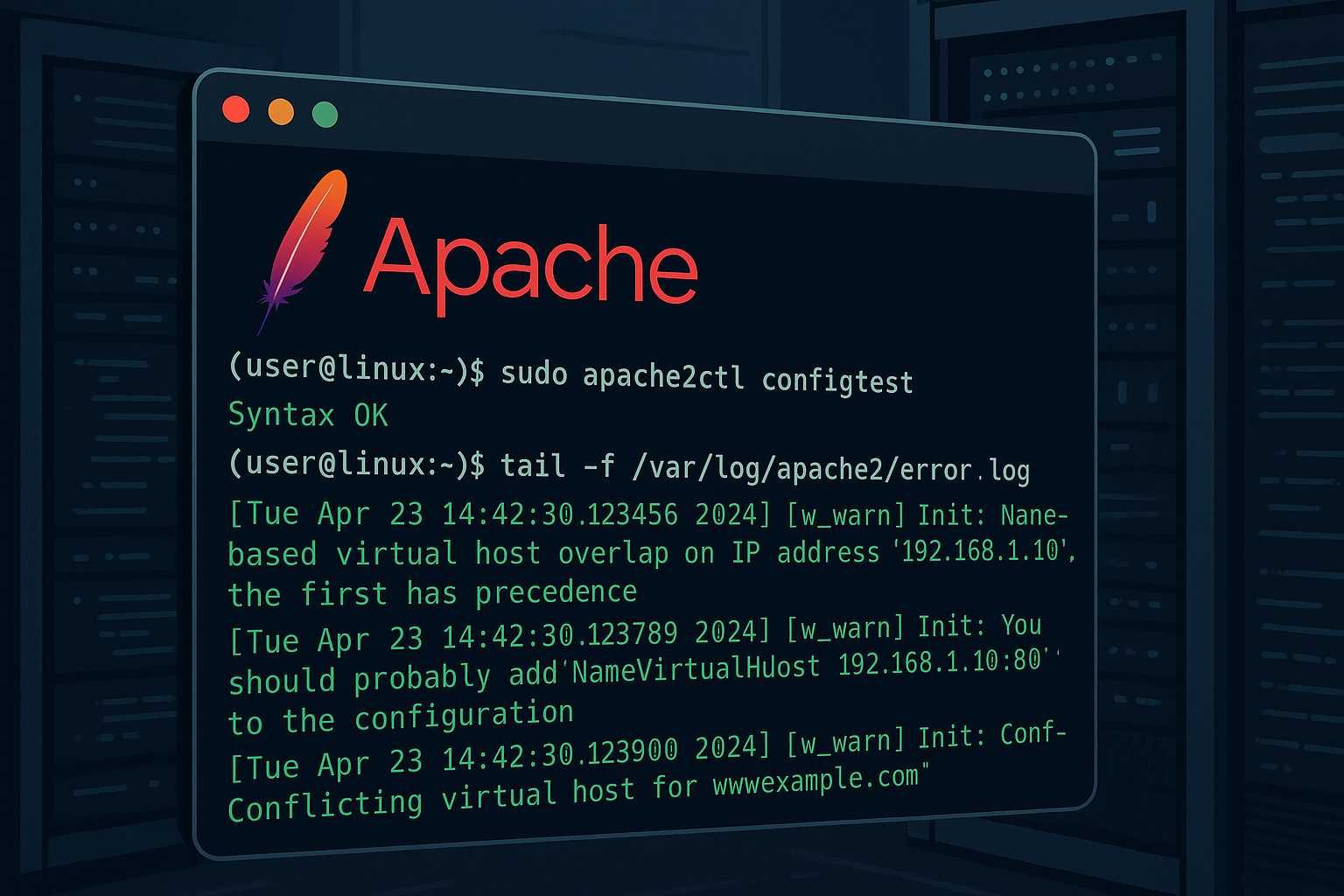Running into problems with Apache virtual hosts? As someone who manages Linux servers primarily via the command line, I often see even seasoned admins get stuck with subtle configuration issues. This article walks you through a practical, command-line-first approach to debugging Apache virtual host problems for any flavor of Linux web server.
1. Verify Virtual Host Configuration is Enabled
Start by confirming that your virtual host configuration is correctly stored and enabled. On Debian/Ubuntu systems, use:
ls /etc/apache2/sites-available/
ls /etc/apache2/sites-enabled/
On RHEL/CentOS:
ls /etc/httpd/conf.d/
Make sure your virtual host file appears in the enabled or conf.d directories. If not, enable it:
# Ubuntu/Debian
sudo a2ensite your-vhost.conf
sudo systemctl reload apache2
2. Test Apache Config Syntax
Before reloading, always check your Apache configuration syntax to prevent accidental downtime:
# Ubuntu/Debian
sudo apache2ctl configtest
# RHEL/CentOS
sudo httpd -t
If you see Syntax OK, your configs are valid. Watch for and resolve any error messages.
3. Examine the "NameVirtualHost" and Port Settings
Inconsistencies between the ports in your Listen directives and the virtual host definitions will cause Apache to ignore your vhosts. Ensure that your virtual host blocks are set up for the right port, e.g.:
<VirtualHost *:80>
ServerName example.com
...
</VirtualHost>
Also, verify Apache is listening on those ports:
sudo netstat -tulpn | grep apache
# or
sudo ss -tulpn | grep apache
4. Check for Overlapping ServerNames
Duplicate or conflicting ServerName or ServerAlias directives can confuse Apache.
Use grep to scan quickly:
grep -ri 'ServerName\|ServerAlias' /etc/apache2/sites-available/*
5. Log File Power: Error and Access Logs
Review the logs for clues. The default locations are:
/var/log/apache2/error.log(Debian/Ubuntu)/var/log/httpd/error_log(RHEL/CentOS)
Tail the logs in real-time while you test:
tail -f /var/log/apache2/error.log
# or
journalctl -u apache2 -f
6. Use Curl for Direct Testing
Sometimes browser cache or DNS can add confusion. Bypass this by using curl on the command line to specify the Host header:
curl -I -H 'Host: example.com' http://your-server-ip/
This will show if Apache is serving the correct vhost for the expected hostname.
By stepping through these command-line checks, you can resolve most Apache virtual host issues efficiently. Remember to reload or restart Apache after making changes, and always check your syntax first. Feel free to share your own debugging tips in the comments—let’s keep Apache running smoothly for everyone!
– Lenny


Leave a Reply